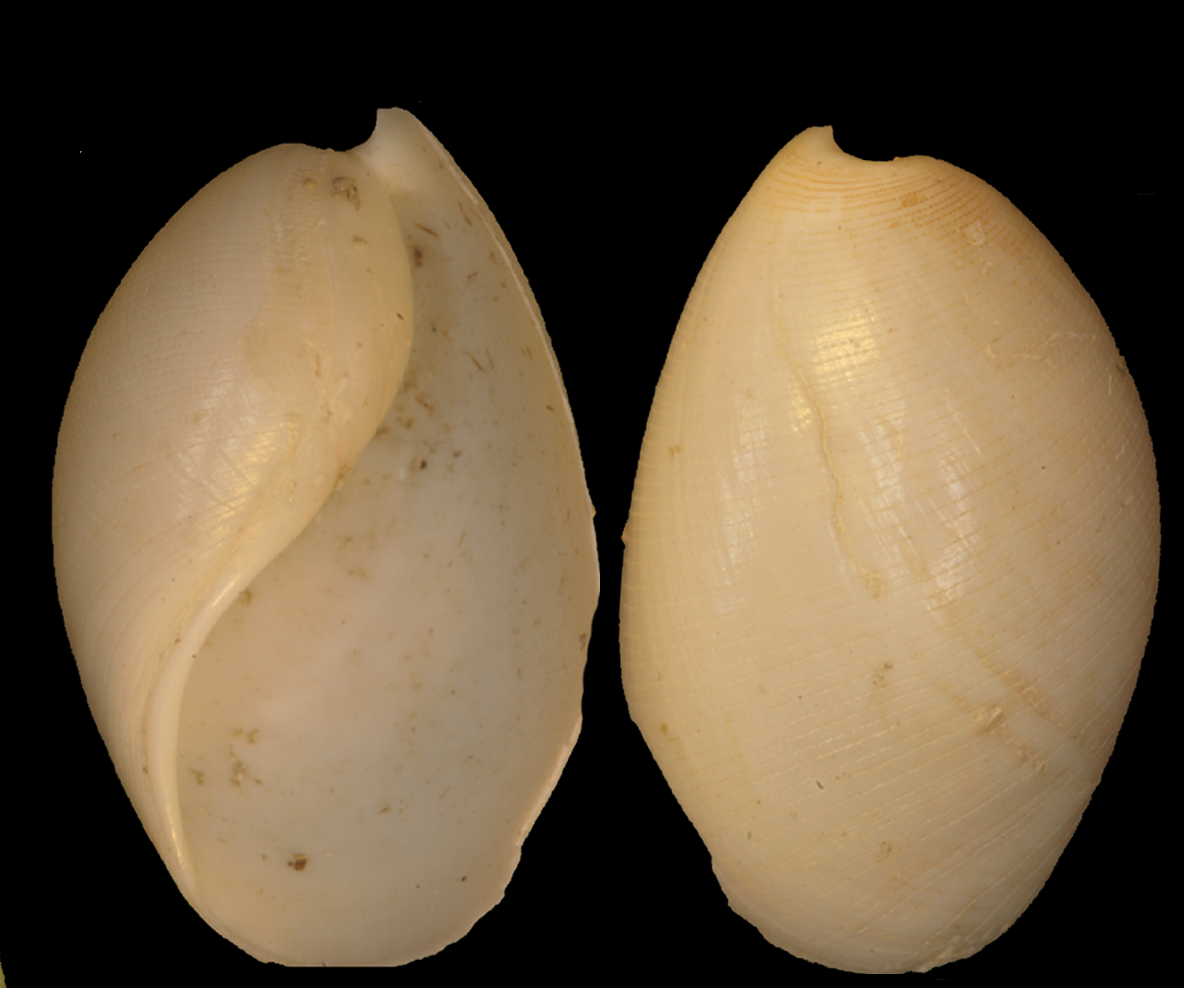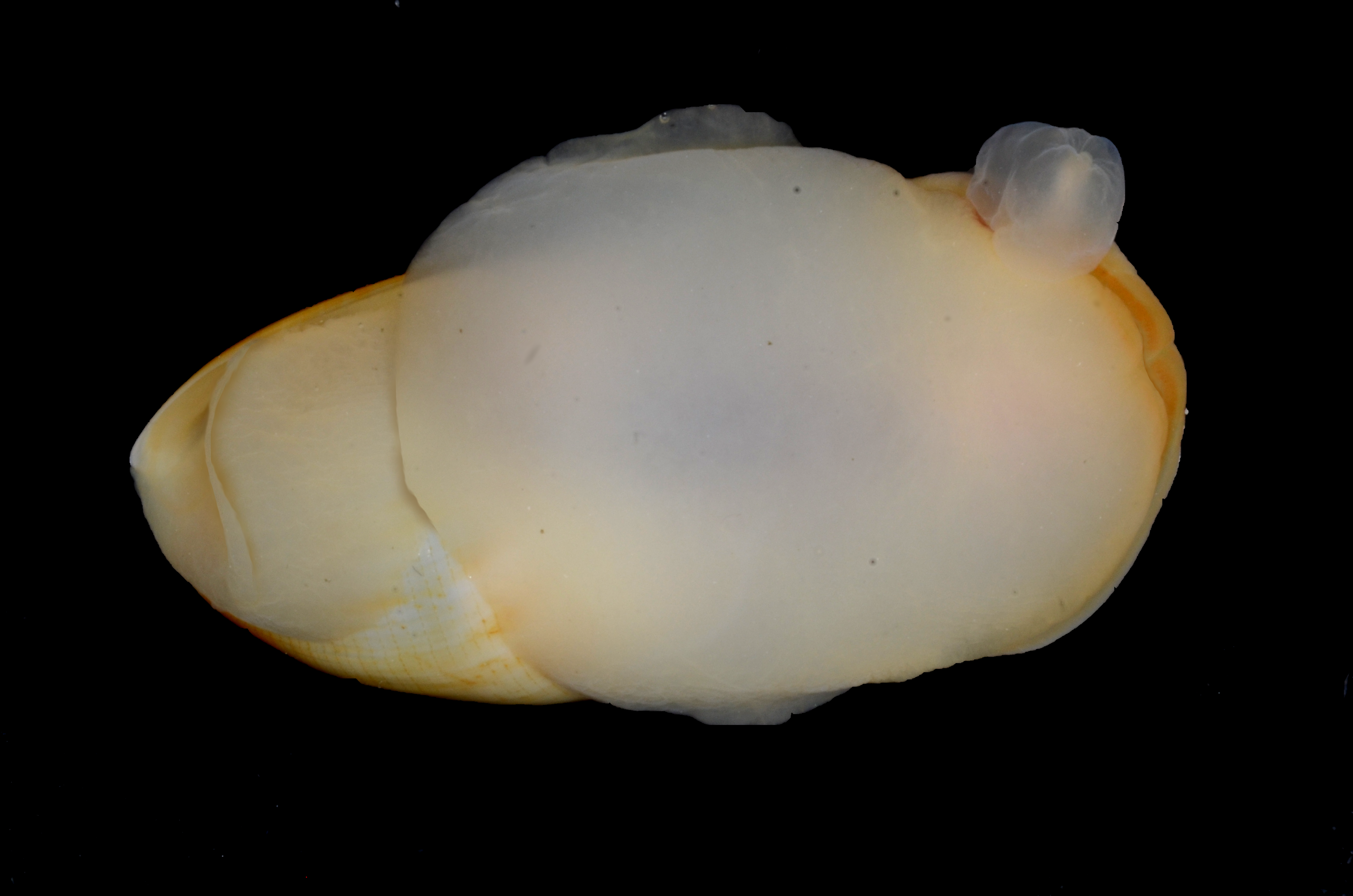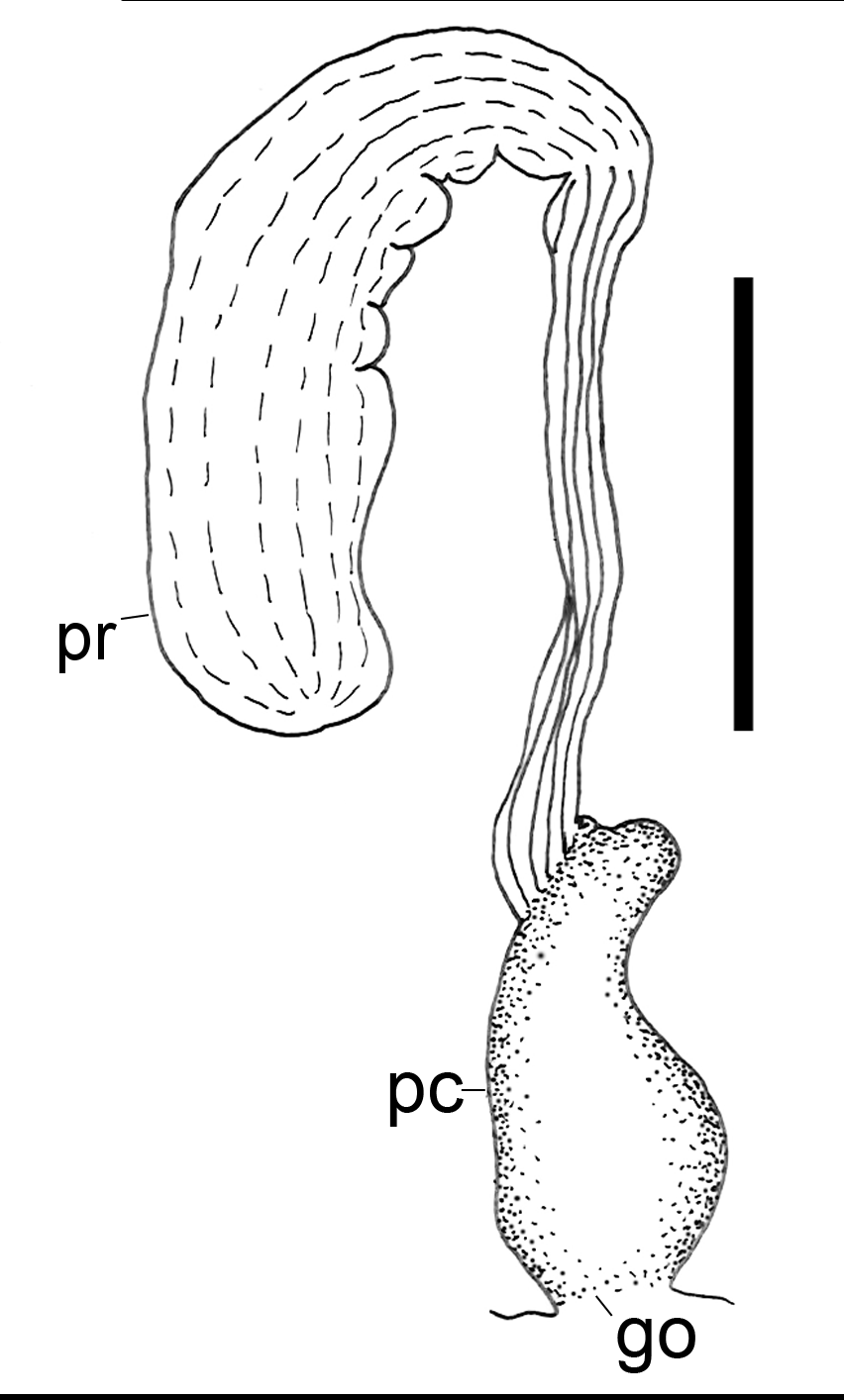Scaphander punctostriatus
Shell description
The shell is solid and external, and usually with a pear-like to oval shape when viewed from above. The tin outer layer of the shell (periostracum) is often visible and yellow to whitish in colour; the shell is white under this layer. The opening is wide, and the upper edge curves towards the top to form a cup, and mostly does not extend beyond the top of the shell (apex). The shell has a pattern consisting of spiral lines of round to oval punctuations that are separated by short spaces and thin to medium sized growth lines. The size of the shell varies between 11–41.2 mm.
Animal description
The body is white or yellow in colour. The head shield is broad, and there are side extensions of the foot (parapodial lobes) and an extension of the mantle under the snail (pallial lobe).
Anatomy
The radula consists of one inner lateral tooth on each side and one central (rachidian) tooth. The lateral teeth are curved with a broad base and simple denticulation, which may be absent or present either in one or two rows. The central tooth has two or three lobes in the front, which may be rounded or triangular. The central tooth has a base with a triangular extension towards the hind. The radula is variable. The gizzard holds three unequally sized plates. The paired plates range in shape from bean-shaped to more squarish, while the unpaired plate is smaller. The male reproductive system consists of a cylindrical penis chamber that carries a blind sac and a cylindrical prostate, which is rounded in the top and narrows into a prostatic tube that connects to the penis chamber near to the blind sac. The inner walls of the penis chamber are lined with soft ridges. The prostate is filled with a spongy tissue. The prostate is often oriented to the left of the digestive tract, and the prostatic tube runs under this tract and connects to the right side of the penis chamber.
Ecology
Occurs in depths between 264–2730 m. This species feeds on foraminiferans, often ingested along with sand and mud.
Geographical distribution
This species is amphi-Atlantic and occurs in the East Atlantic from Norway, Iceland, Faroe Islands and southwards to the British Isles and the Mediterranean Sea. In the West Atlantic this species occurs from Greenland, the east coast of North America, the Antilles, and the Sargasso Sea.
References
Eilertsen ME og Malaquias MAE (2013). Systematic revision of the genus Scaphander (Gastropoda, Cephalaspidea) in the Atlantic Ocean with a molecular phylogenetic hypothesis. Zoological Journal of the Linnean Society 167(3): 389-429. http://onlinelibrary.wiley.com/doi/10.1111/zoj.12013/abstract. DOI: 10.1111/zoj.12013.








